If you’re looking to bring classic beauty and year-after-year blooms to your garden, perennial white flowers are a must. Their soft, creamy hues provide the perfect contrast to bold-colored blooms and lush greenery, making them incredibly versatile for any garden style, from cottage charm to minimalist modern.
White perennials also play a key role in creating balance and light in your landscape. They can brighten shaded corners, bring a peaceful feel to vibrant beds, and even help create the illusion of a larger space. Whether you’re designing a monochrome garden or simply want a few elegant touches, these long-lasting blooms are a low-maintenance way to add timeless appeal.
1. Large-flowered trillium (Trillium grandiflorum)
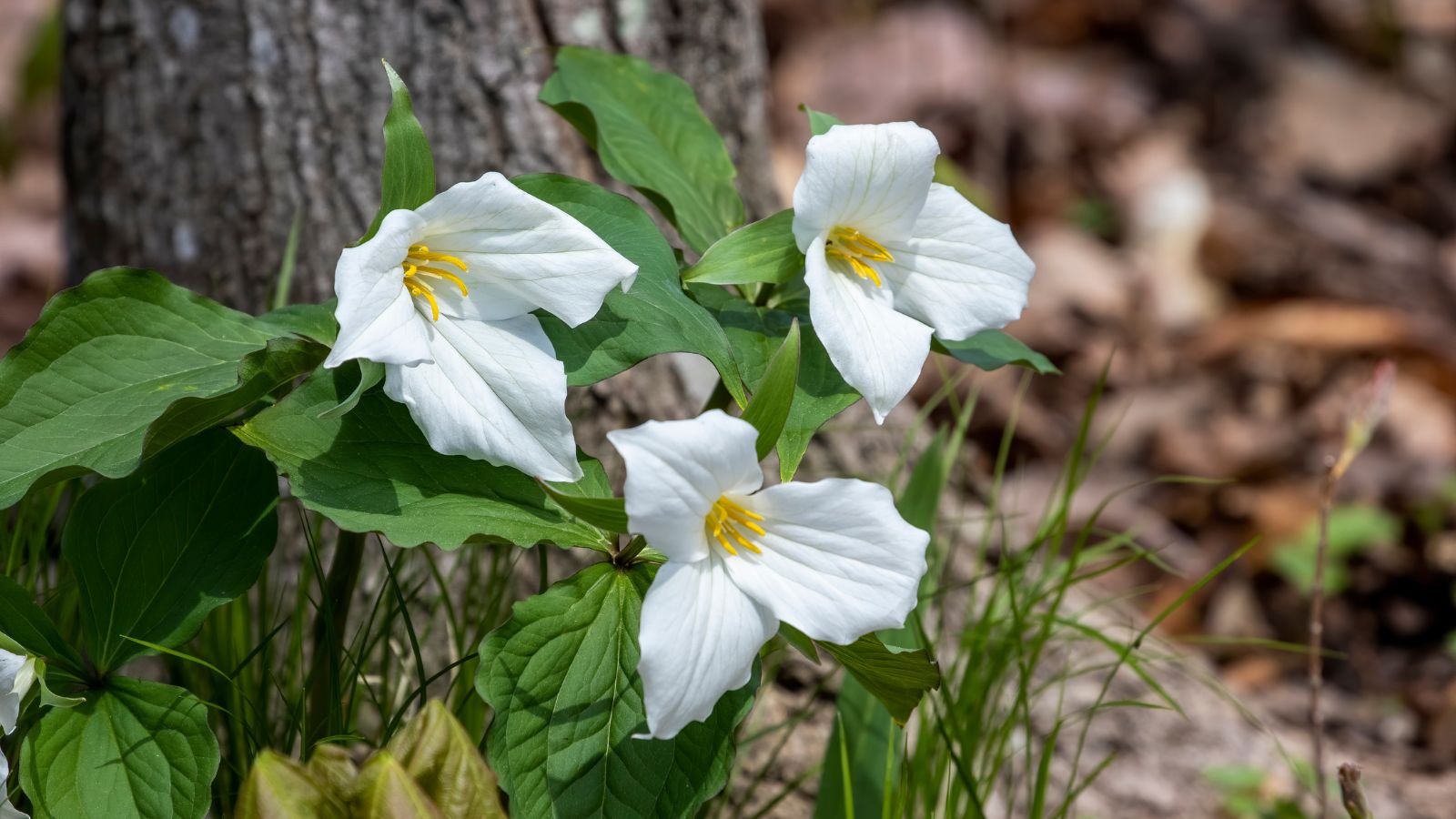
Image credit: Depositphotos.
One of the largest, showiest trilliums, the large-flowered trillium features three-petaled blossoms up to four inches wide, with contrasting yellow stamens. Each of these brilliant flowers blooms above three large, glossy, green bracts, often mistaken for leaves.
A woodland wildflower native to eastern North America, large-flowered trillium thrives in USDA zones 4-8. It likes rich, well-drained soil in part to full shade.
2. Yarrow (Achillea spp.)
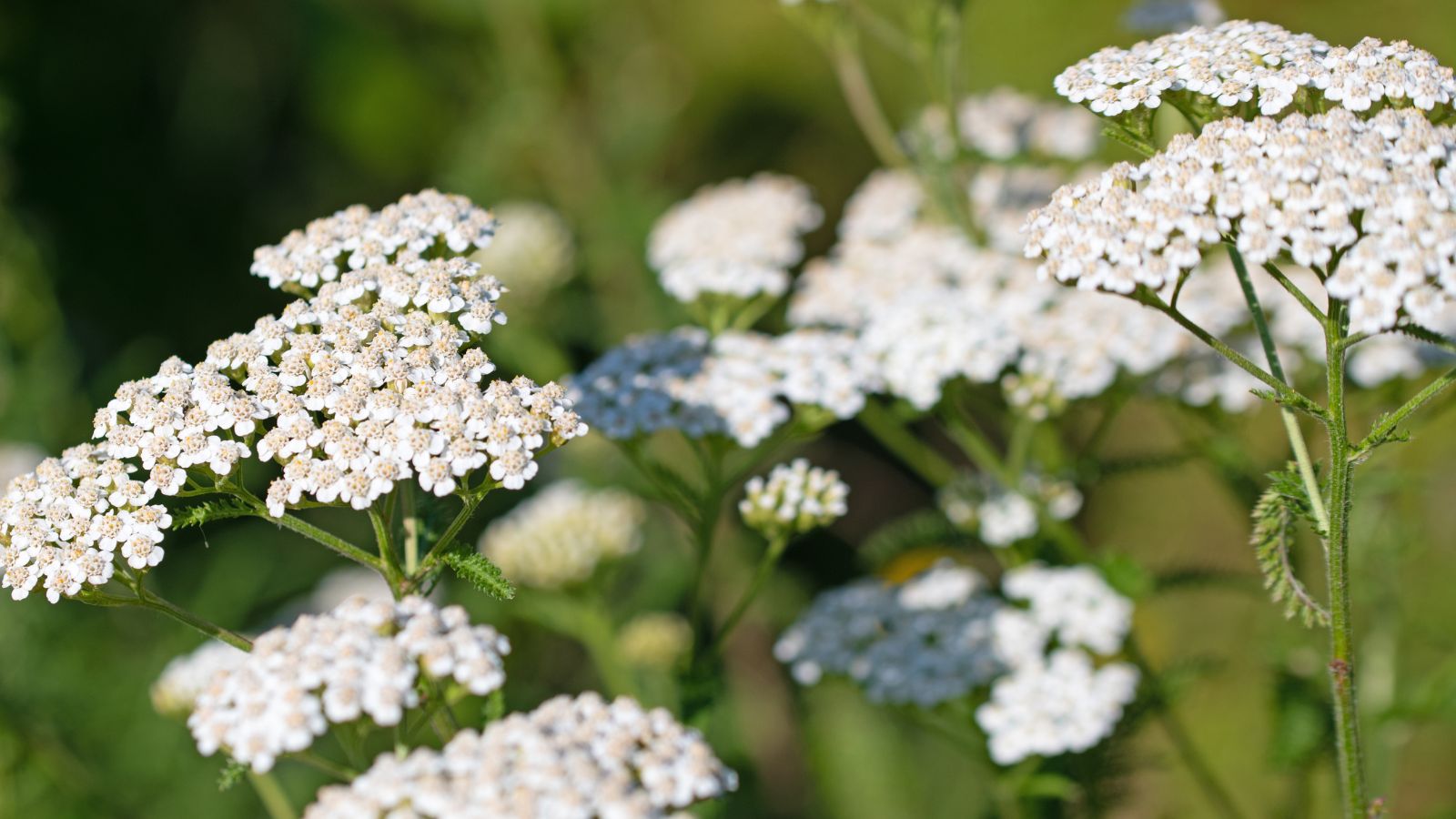
Image credit: Depositphotos.
The tiny flowers of yarrow bloom in tight, flat clusters from late spring into fall and are beautiful in fresh and dried arrangements. Below the blooms, the ferny, aromatic foliage is equally attractive. Cutting the stems of spent blooms will result in a tidier appearance, encourage continued blooming, and reduce aggressive spreading.
Yarrow does best in poor soil with good drainage and full to part sun. It is hardy in zones 3-9.
3. Perennial candytuft (Iberis sempervirens)
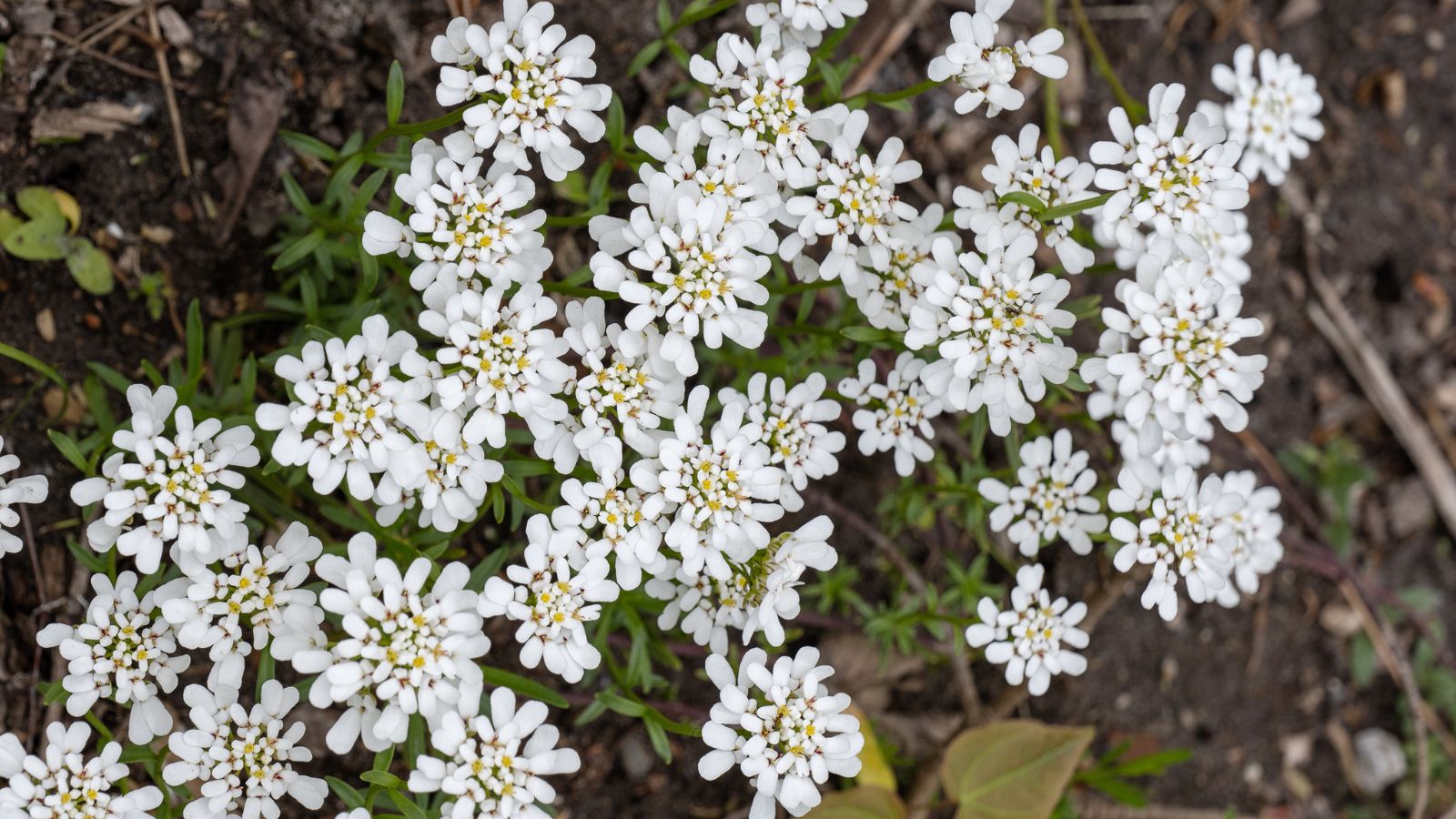
Image credit: Depositphotos.
A sprawling semi-evergreen to evergreen ground cover, perennial candytuft forms low mounds six to 12 inches tall. In spring, dense clusters of small white flowers almost completely hide the narrow, leathery leaves.
Perennial candytuft blooms most profusely in full sun and requires moist to dry soil with good drainage. It thrives in zones 3-8.
4. Lupine (Lupinus spp.)
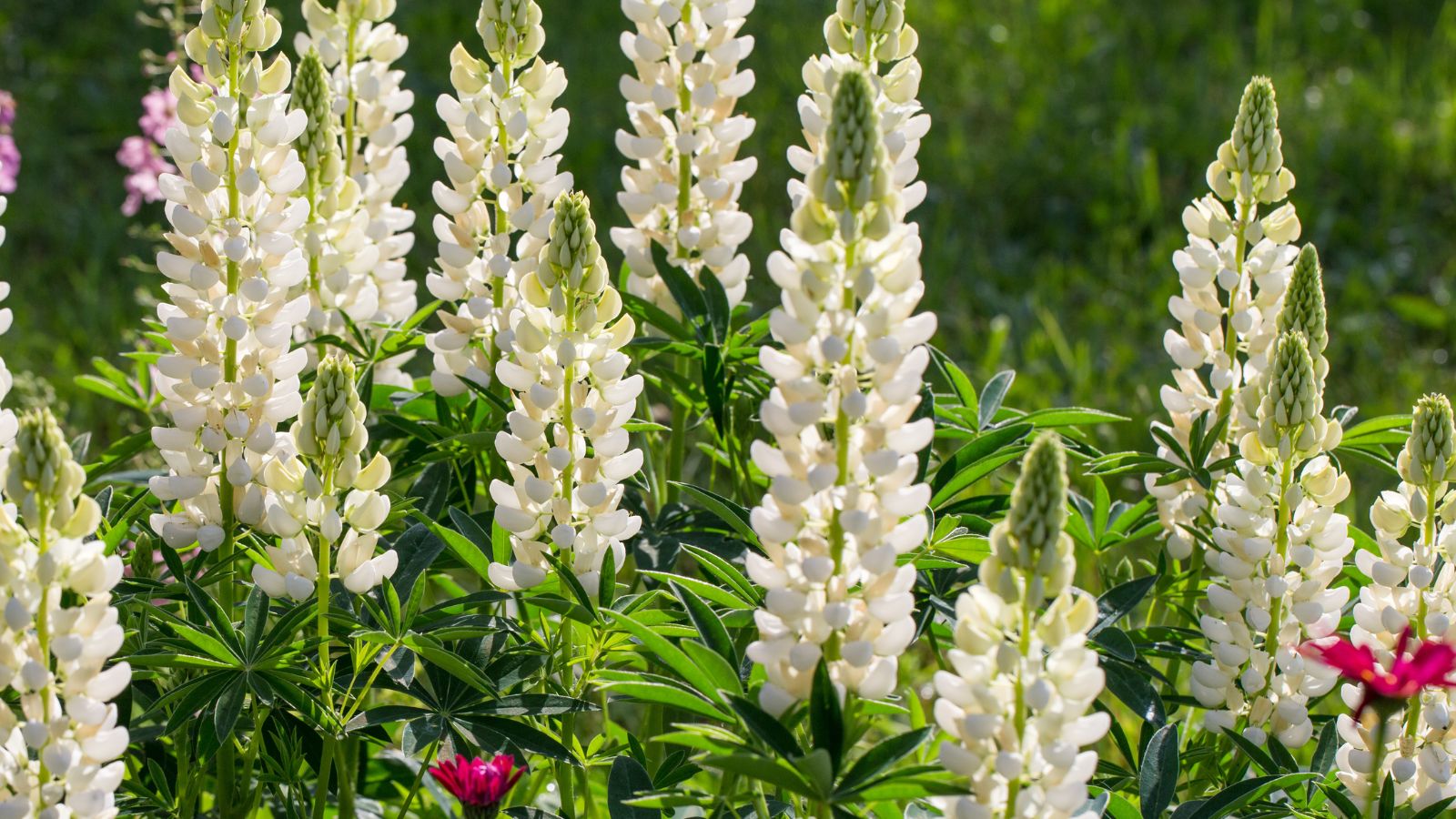
Image credit: Depositphotos.
Lupine has attractive palmately divided foliage above which tall spikes of pea-like flowers bloom in spring and early summer. Most of the more than 300 species are native to North America, and the lovely blossoms attract hummingbirds and pollinators.
Lupines prefer a cool climate. They grow in zones 3-8 but may be short-lived in warmer areas. They need good drainage and full sun to partial shade.
5. Garden Phlox (Phlox paniculata)
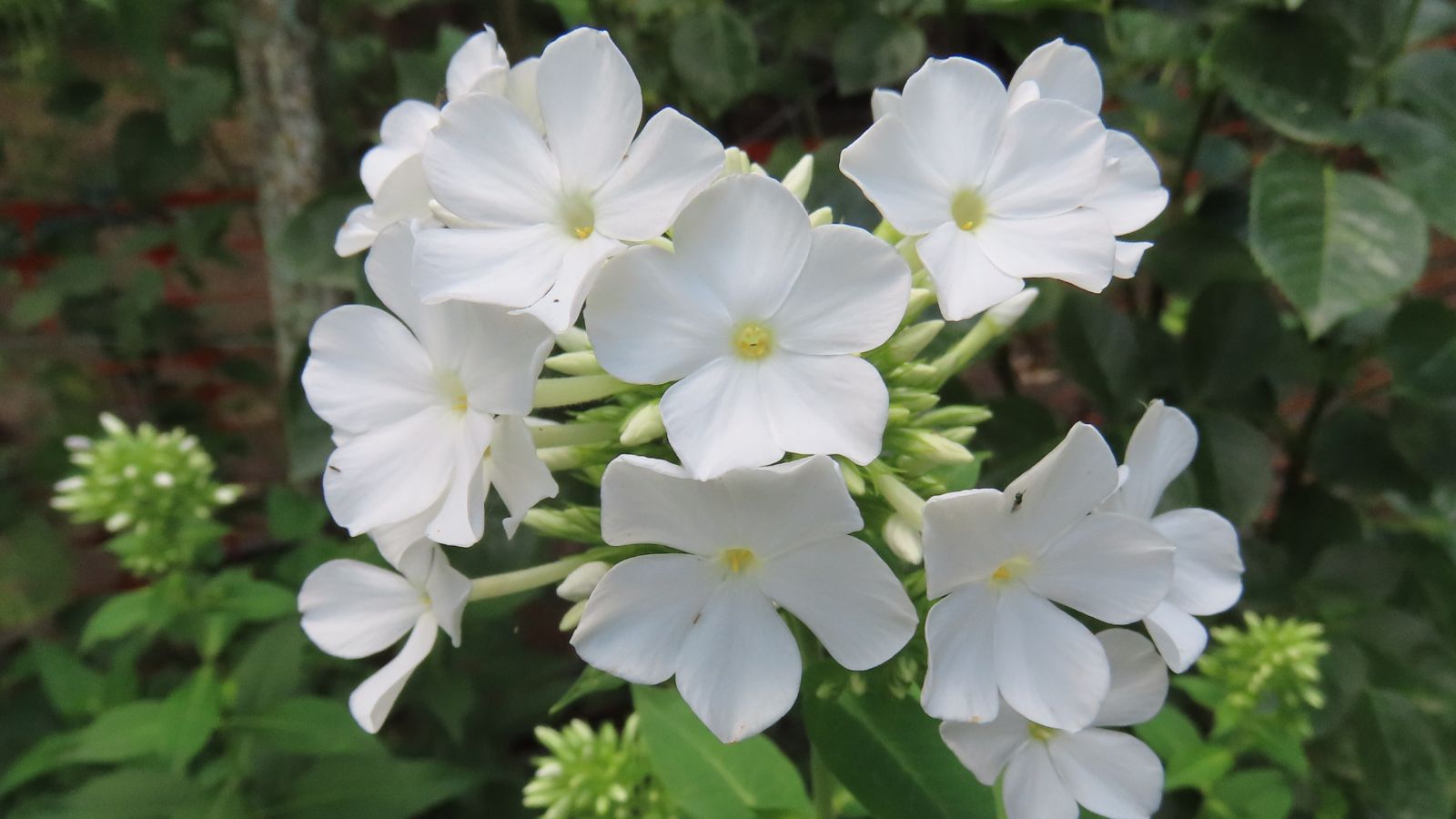
Image credit: Depositphotos.
From midsummer into fall, garden phlox produces domed clusters of fragrant, tubular flowers that hummingbirds love. The plants form clumps two to four feet tall and should be deadheaded to prevent aggressive spreading and encourage reblooming.
Garden phlox prefers moist, rich, well-drained soil in full to part sun. Good air circulation, mulch, and watering at the base of the plant will help prevent common problems. It grows in zones 4-8.
6. Shasta Daisy (Leucanthemum x superbum)
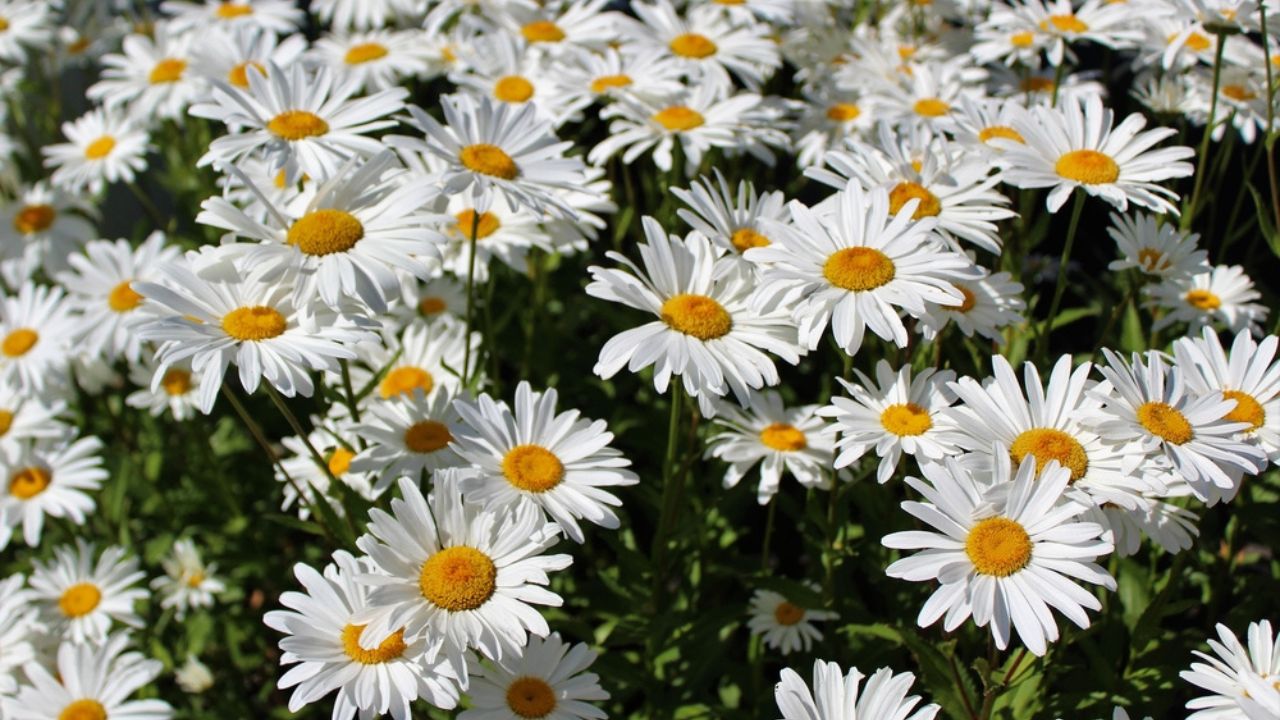
Image Credit: Shutterstock.
The classic Shasta daisy features sunny yellow centers surrounded by rays of bright white petals. These lovely flowers bloom in spring and summer. They attract butterflies and make excellent cut flowers with long, rigid stems.
Shasta daisy grows happily in average to dry soil with good drainage in full to part sun. It thrives in zones 4-9.
7. Dutchman’s Breeches (Dicentra cucullaria)
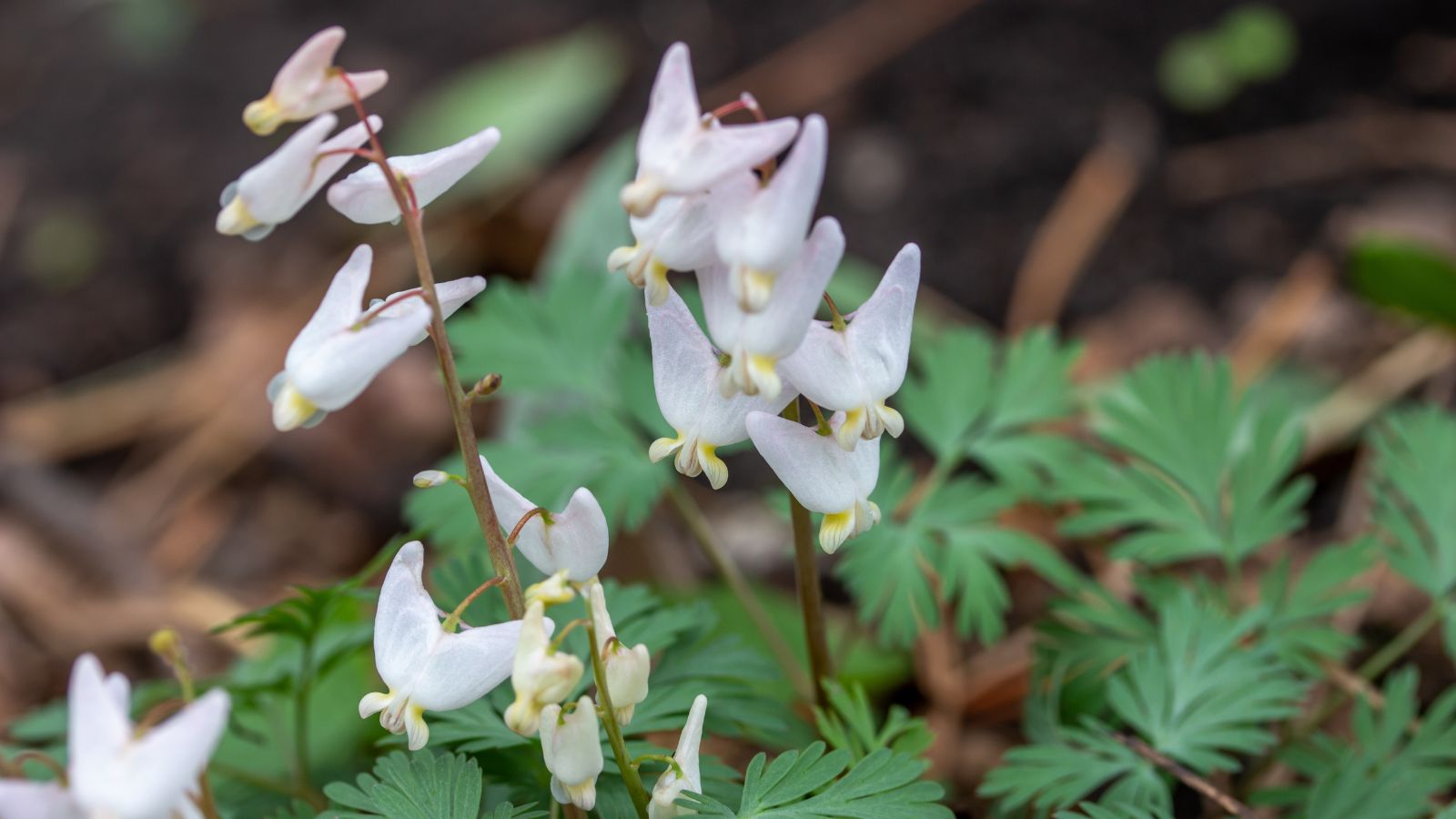
Image credit: Depositphotos.
Named for its dangling flowers that resemble pants hung on a laundry line, Dutchman’s breeches bloom throughout the spring. The fragrant blossoms appear on arching stems above ferny basal leaves, and the whole plant goes dormant with the arrival of summer heat.
A native woodland perennial, Dutchman’s breeches prefers partial shade and moist, well-drained soil. It grows in zones 3-7.
8. Peony (Paeonia hybrids)
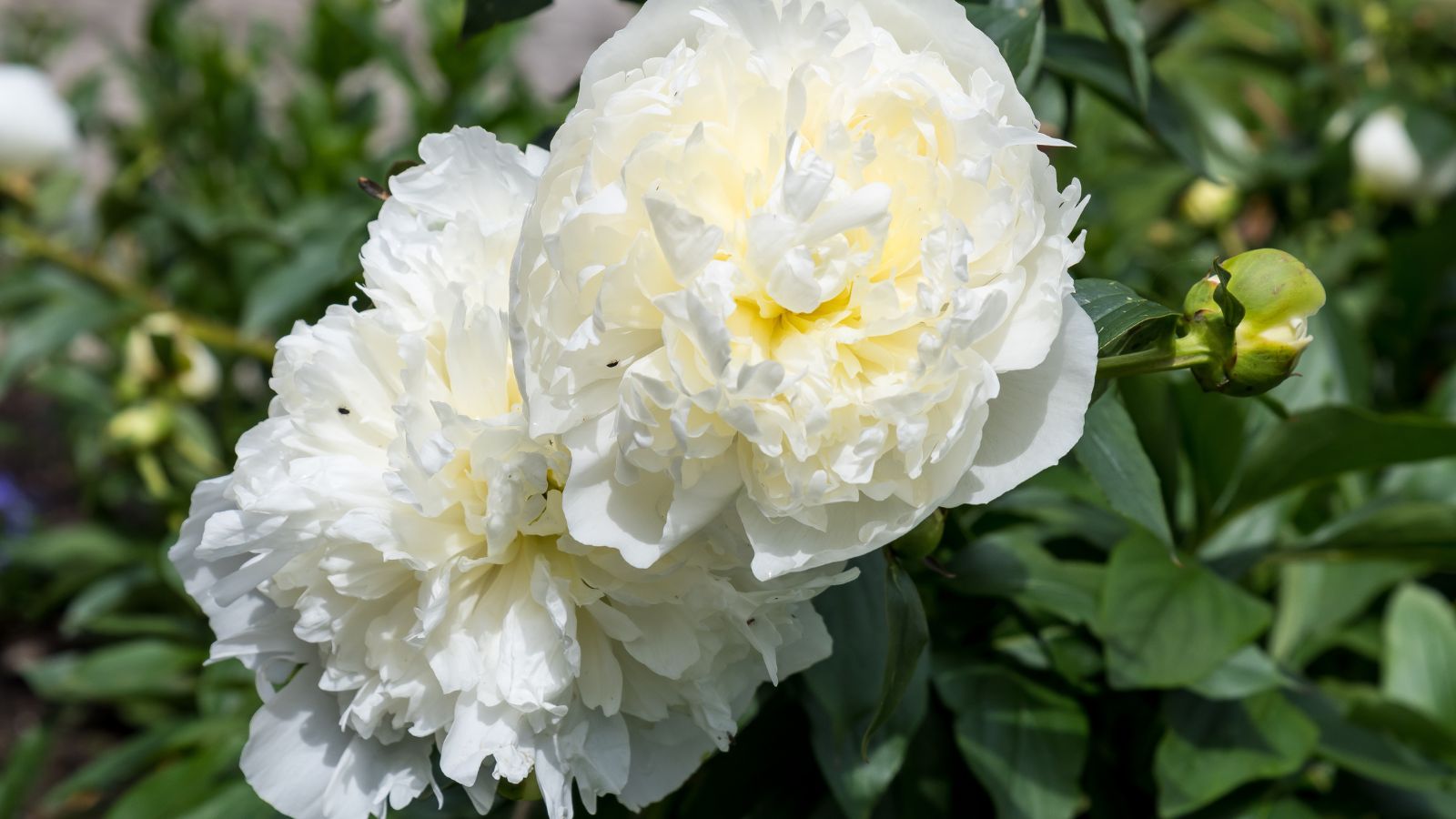
Image credit: Depositphotos.
An old-fashioned flower, the peony is well-loved for its large, elegant, ruffled blooms. Though the flowers themselves are short-lived, the plants may survive for decades. Planting multiple cultivars with differing bloom times will ensure a longer overall flowering season.
Peonies will grow in zones 3-8, but do best in zones 5-7. They appreciate full sun to light shade and organically rich soil with good drainage.
9. Anemone (Anemone x hybrida)
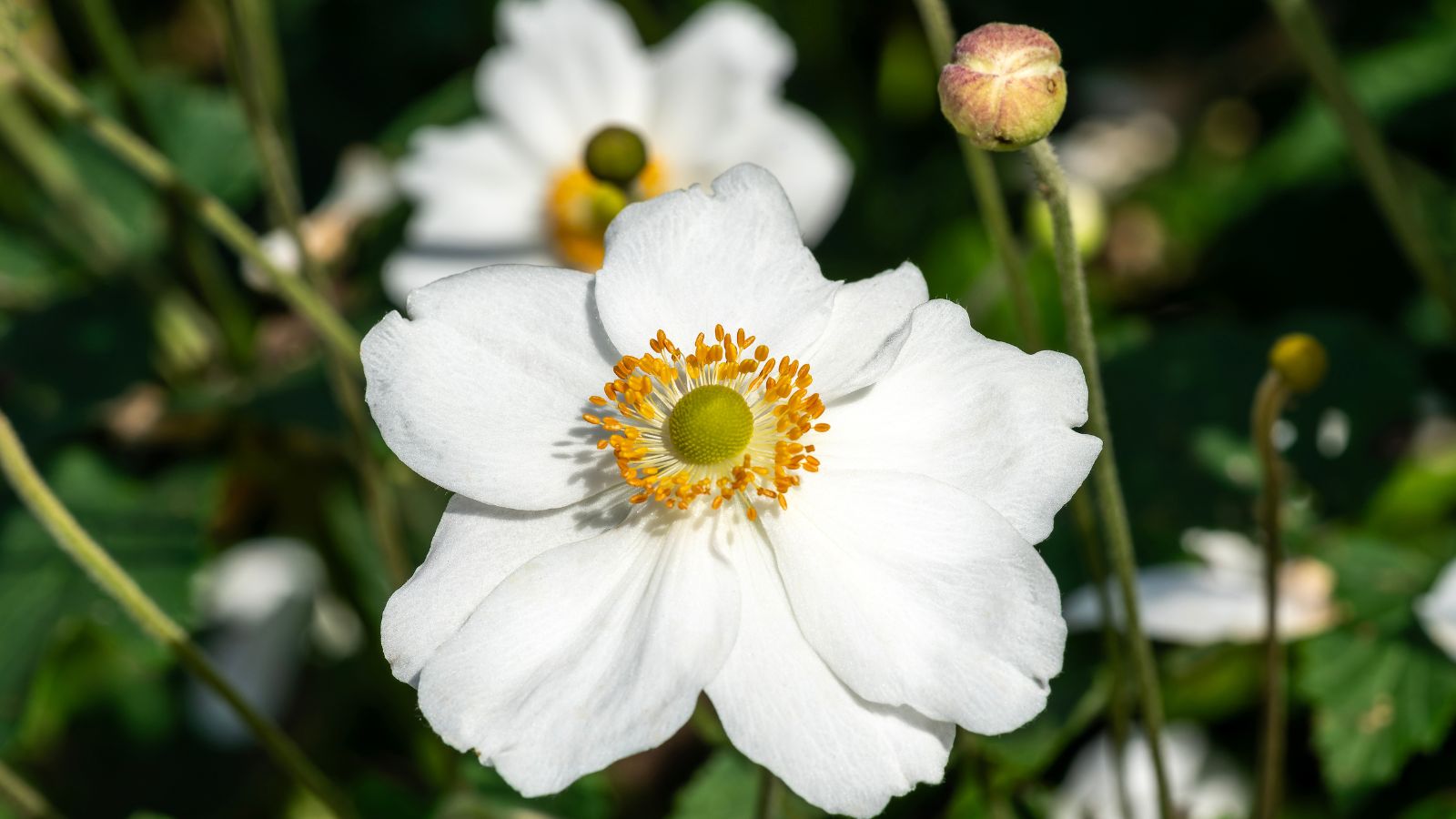
Image credit: Depositphotos.
Anemones grow one and a half to three feet tall with a spreading and mounding habit that makes them a good flowering groundcover. Held up on wiry stems, the saucer-shaped flowers bloom in late summer and early fall with bright yellow stamens surrounding a green eye at the center of overlapping petals.
These hybrid woodland flowers do best in consistently moist, fertile, well-drained soil in part sun. They thrive in zones 4-8.
10. Plantain Lily (Hosta plantaginea)
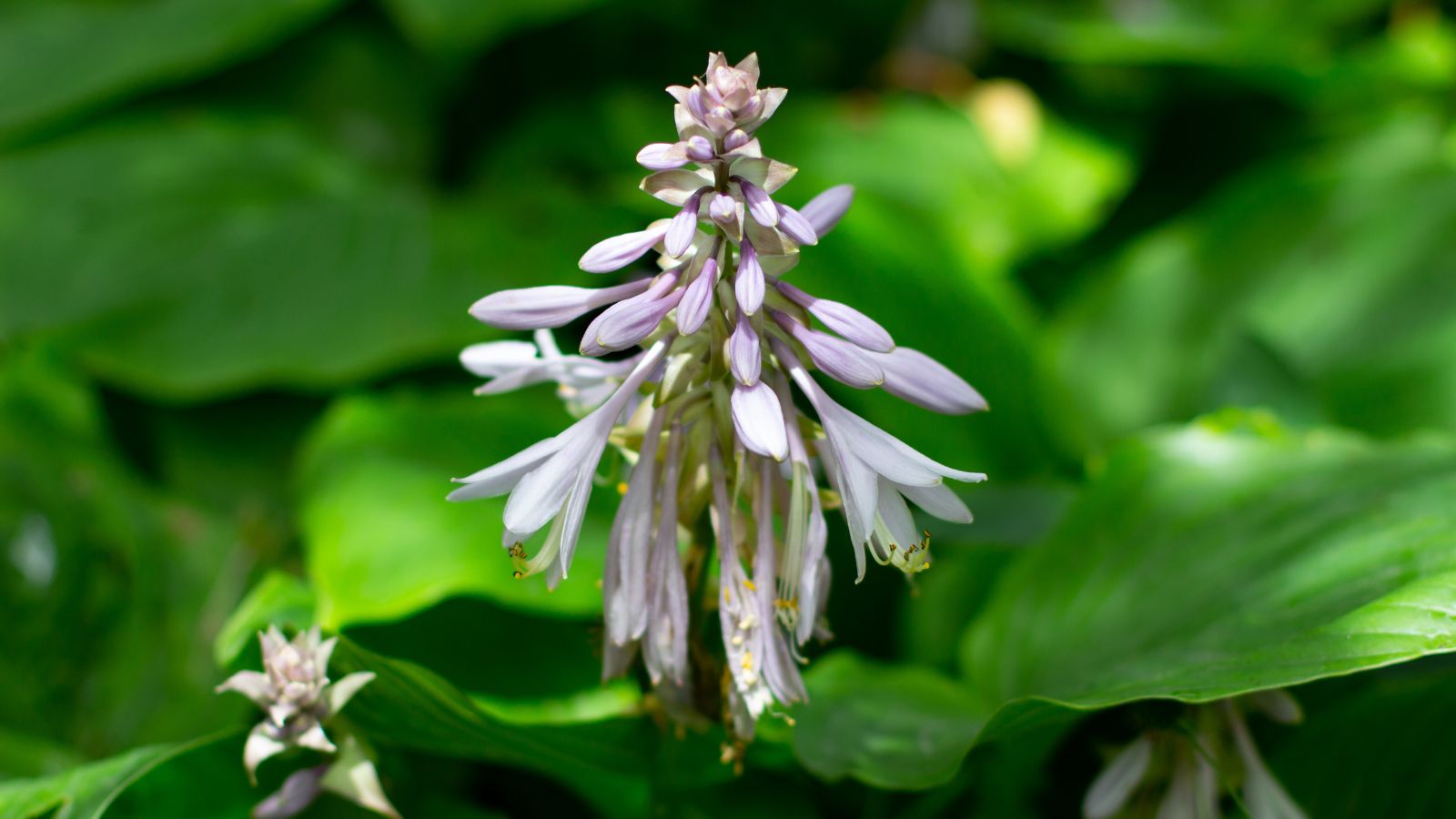
Image credit: Depositphotos.
A species of hosta, plantain lily, has some of the largest, showiest flowers in its genus. These fragrant, white, trumpet-shaped blossoms reach three to four inches long and open in the evenings in late summer. The broad, heart-shaped leaves making up the base of the plant are lime green.
Plantain lily prefers moist, organically rich, well-drained soil in full to partial shade. It grows in zones 3-9.


